#phillip zarrilli
Text
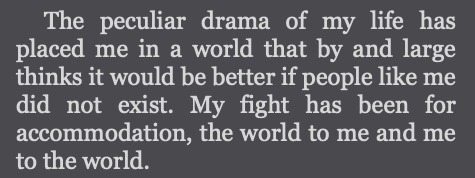
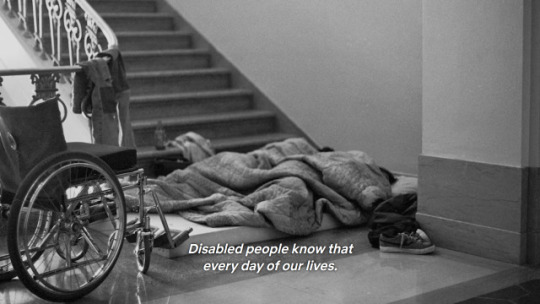

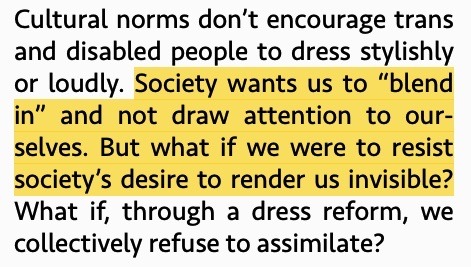


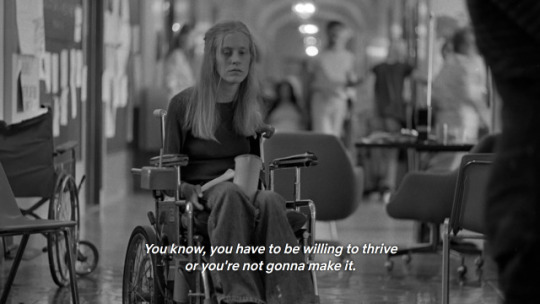
disability + existence/visibility
harriet mcbryde johnson - “unspeakable conversations” / crip camp (2020) dir. james lebrecht, nicole newnham / sky cubacub - “radical visibility: a disabled queer clothing reform movement manifesto” / “and suddenly i disappear (I)” from the singapore ‘d’ monologues, dir. phillip zarrilli / amanda leduc - “disfigured: on fairy tales, disability, and making space” / crip camp (2020) dir. james lebrecht, nicole newnham
#harriet mcbryde johnson#crip camp#james lebrecht#nicole newnham#corbett o’toole#sky cubacub#phillip zarrilli#kaite o’reilly#amanda leduc#i was just reading a bunch of stuff that had these themes and i was struck by the similar wording and language used so i had to#look i’m going through it tonight#disabled things#disability#my caps
83 notes
·
View notes
Text
Richard III redux OR Sara Beer [is/not] Richard III / Festival Simbiòtic
Richard III redux OR Sara Beer [is/not] Richard III / Festival Simbiòtic
Il Teatre Nacional de Catalunya ospita la quarta edizione del Festival Simbiòtic e porta in scena Richard III redux OR Sara Beer [is/not] Richard III di Kaite O’Reilly con Sara Beer. (more…)
View On WordPress
#Festival Simbiòtic#Kaite O’Reilly#Phillip Zarrilli#Recensione Riccardo III#Sara Beer#Staging Europa
0 notes
Text
The give and take of Phillip Zarrilli’s art
The give and take of Phillip Zarrilli’s art
[ad_1]
The far-sighted internationally renowned theatre personality, Phillip Zarrilli, passed away on April 28, after a fourteen-year battle with cancer that did very little to deter his indomitable spirit and unflagging dedication to his practice. His long-standing professional affiliations with the University of Exeter and the Llanarth Group resulted in an impressive body of work that…
View On WordPress
0 notes
Text
Phillip Zarrilli Death | Dead - Cause Of Death | Obituary
Phillip Zarrilli Death | Dead – Cause Of Death | Obituary
Phillip Zarrilli Death | Obituary | Cause Of Death – Passed Away
Friends and families of the deceased are broken by the passing of their beloved one who has just died. It is with a deep sense of grief that affected individuals mourn and shared the heartbreaking news on social media.
Condolences are tributes are been shared across different social media timeline of the death of Phillip. We learned…
View On WordPress
0 notes
Text
THE STUDIO:
https://www.wilko.com/en-uk/wilko-durable-matt-emulsion-paint-supernova-25l/p/0283303
Black painting on walls? characters from my animation/ drips/ imperfections
‘The studio ... a site to explore and develop the ability to modulate between union and separation ... A provisional place where there can be no absolutes. A place of propositions, not givens; a place to practice dialectics, not ends or goals; a premise, not a decision; a possibility, not a fact.
The studio ... a place that can never be completely sure of itself, where foundations will always be shaken, expectedly, at any moment. If we try to stand firm on this ground, it will always be loose beneath our feet – the disaster waiting to happen; the rug about to be pulled out; the pratfall waiting to happen; the ‘shit’ that happens. The studio reeks of the possibility of failure and loss.
The studio ... a place of how, and ‘what if’, of make-believe, of what anthropologist Victor Turner so aptly identified as the ‘subjunctive mood’ – the ‘as if of possibility and play ... the space between’
Phillip Zarrilli, ‘The Metaphysical Studio’, 2002 (from Hoffman, ed., The Studio, 2012, 104-8)


A REINVENTION OF STUDIO SPACE!!!!
- Looking back at my notes for the lecture: THE STUDIO, I then began thinking about what little time I had been spending in the university studios. I personally find it hard to leave my room sometimes (oh dear) so to make it seem more exciting to myself, not as a scary white space but more homely, I am going to do my very own version of DIY SOS! Even writing about it creates an excitement, I have always been a messy person, not caring about spilling paint on almost everything I own so I have come to the conclusion that I don’t like working at uni because the white walls quite frankly scare me!! TOO CLEAN too perfect, I shall paint all over them in a frantic manor, maybe even adding a lamp/ plants because why not!! create a space I feel comfortable in.
- I feel as though this is the second turning point in my practice, an inescapable turning point that I must go through with and not back out! Next step forward, buy paint for walls. This is something that perhaps I will do at the beginning of the next unit!
0 notes
Text
Topic selected!
by Elisa Miller, Student Historian 2022/2023
I am happy to say I have finally narrowed down my topic! After I re-discovered the Asian Theater program while writing my last blog post, I decided to delve back into it. I have solely been researching the program over the last two months and am actually nearing the end of the research phase.
While I initially focused on the program’s founder, A.C. Scott, I quickly realized there was rather limited information about his time here. Because he was here in the 60s and 70s, there were only so many resources that were digitized/available. Most of the information I found was from the Alumni Magazine and Communication Arts newsletters, such as this piece written by Scott himself.

A year in review by A.C. Scott. Speech Department Newsletter, 1966
One major source I discovered was an oral history interview with Scott in 1979. It covered how he got started in Asian theater, his arrival in Madison, how he founded/ran the program, what he was currently working on, and some of the struggles he faced teaching. Interestingly, Scott was a somewhat unpopular figure in the department. The administration and his coworkers viewed him as difficult to work with, stubborn, and generally unlikeable. In one of his final statements, Scott says, “But I feel very grateful in the end to the University because by managing to survive in
spite of all my faults and problems, I have been able to take my work forward and develop ideas that I'd hoped to be able to develop when I first said I would like to come here… I am far less
grateful to the department because although I have been a difficult customer, I agree, and
I refused to give in to anybody's ideas but my own, so they said, well, I was egotistical
too, and didn't have a plan. Well I didn't have a plan in any public relations sense, and I'm
not that kind of person.”
Scott also discusses struggling with critics. “The worst people of all are the newspaper critics here, who simply assume that everything they see us do is Asian. They never come round to see your work… For instance, we played a Pinter piece some summers ago. It was the play about two gangsters, ‘The Dumb Waiter’. We used a good deal of restraint and silence and control in it because Pinter's plays do have that. And the critic concerned said this was a ‘Japanese influenced
play; and so on.”
I was very intrigued by this idea, but failed to find any of the reviews online. I turned to the theater archive that documents all the plays, and their dates, put on by the university to try and cross reference the dates with the Daily Cardinal. However, many of Scott’s plays were not included and this turned out to be a rather fruitless venture.
When I seemingly exhausted any information regarding Scott on the internet and the UWDC, the UW digitized collections, I moved on to his successor, Phillip Zarrilli. Zarrilli ran the program from 1979-2000, but there was unfortunately even less information about him than Scott. Scott had founded the program on a Ford Foundation Grant, but it ran out in his last years at UW. He stopped putting on productions because of this, and it seems Zarrilli may have run into a similar issue. I was unable to find any proof that Zarrilli put on a single production while he was here. There was little to no information on his years at UW, so it seems the program may have taken a steep dive.
Finally, I looked into the more modern-day version of the program. David Furumoto arrived at UW in 2000 and just retired last year in 2021. I was able to find much more information on Furumoto than his predecessors and much more about the productions he put on.

David Furumoto (Photo by Sarah Maughan)
A majority of his productions have online reviews, photos, and cast lists. There are also numerous interviews and videos about Furumoto and his productions online. He is a major figure in Asian Theater in the Midwest in addition to UW.
I recently reached out to Professor Furumoto about potentially recording an oral history interview to include in my final project. I am very excited about the prospect of talking to Mr. Furumoto and getting to document his experience here at UW. I think it would be an interesting and engaging conversation, so I hope to hear from him soon!**
That’s all I have for this month! Thanks for reading and I am looking forward to continuing this journey.
**UPDATE: Professor Furumoto agreed to be an oral history interview!
3 notes
·
View notes
Text

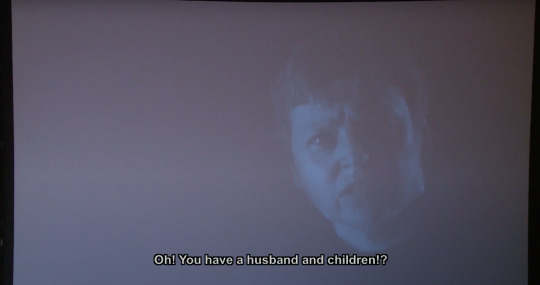




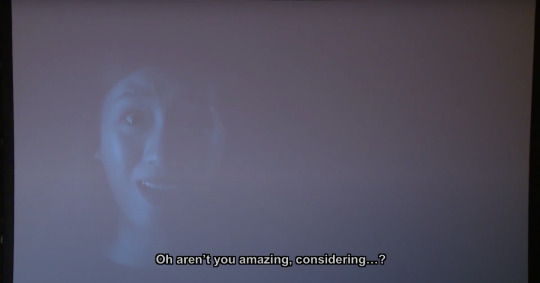

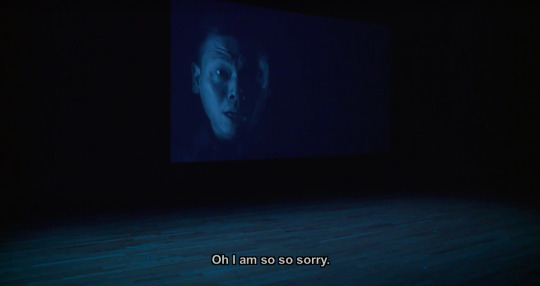

“How Many Ohs…?” from And Suddenly I Disappear: The Singapore ‘d’ Monologues (wr. Kaite O’Reilly, dir. Phillip Zarrilli)
#and suddenly i disappear#the d monologues#kaite o’reilly#phillip zarrilli#disability#my caps#i’m sorry these are two different colours but if you watch the play you’ll know why#disabled things
0 notes
Text
Told by the wind
Ar yr 12fed o Hydref es I Chapter I weld perfformiad ‘Told by the wind’. Cafodd ei ysgrifennu gan Kaite O’Reilly ag ei perfformio gan ‘The Llanarth Group’ gyda Phillip Zarrilli yn chwarae y dyn a Jo Shapland yn chwarae y fenyw. Yn fy marn i mae’n ceisio dweud stori am dau pobl sydd ddim yn cwrdd ond yn dilyn yr un llwybr yn bywyd, mae’r dau yn dawnsio yr un dawns ond byth yn croesi tra gwneud. Mae hefyd yn cael ei cyfleu bod yr dau ddim yn yr un cyfnod amser, felly mae’r perfformiad yn digwydd ar wahân ond dal yn cydamseru gydai gilydd. Mae ddim yn dilyn plot penodol ag yn agored i cynulleidfa meddwl am beth sydd yn mynd ymlaen. Mae hefyd yn mynd yn erbyn theatr traddodiadol ag yn cynnwys elfennau Asiaidd yn lle Ewropeaidd er enghraifft dawns.
Roeddwn i’n hoff iawn o’r goleuadau oedd wedi cael ei defnyddio trwy gydol yr sioe. Roedd yr darn wedi cael ei goleuo yn gwan ar dechrau a diwedd ond yn fwy llachar trwy gydol yr darn. O ni wedi cymryd hyn fel ffordd o dangos yr haul yn codi a wedyn i machlud fel symbol bywyd a marwolaeth. Mae’n ddangos yr dechrau, yr taith ag hefyd yr diwedd yn ffordd cynnil ond dal yn effeithiol sydd yn mynd law yn law gyda distawrwydd yr darn. Roedd yr set yn eithaf minimilistic, ar yr llawr yn canol yr llwyfan roedd yna sgwâr o dail gyda pridd yn yr tu fewn ag ar chwith yr llwyfan roedd yna cadair, desg a ffenest. Roeddwn i’n hoffi yr dewis yma gan roedd yn creu olygfa heddychlon a naturiol oedd yn berthnasol i’r drama ar cyfan. Roeddwn i ddim yn hoff iawn o steil yr desg a’r cadair ond roedd yn helpu rhoi syniad pa cyfnod amser roedd hyn yn digwydd mewn.
0 notes
Text
Told by the Wind Review
Told by the Wind is an engaging piece which leaves the meaning and plot in the hands of each individual audience member. The performance was completely stripped back of most elements we associate with drama, leaving a great deal to the imagination. Writer Kaite O’Reily (Dramatist) and actors Jo Shapland and Phillip Zarrilli have created a stillness and quietness to the piece which has a constant intensity and atmosphere that causes members of the audience to be unable to move or even swallow in fear that it may be heard throughout the auditorium.
Constantly both actors are on stage, always facing away from each other and never connect. Suggestive movement takes place with slight dialogue from the male character, who I believe has Dementia and is still grieving for his dead wife and is trying to remember her. She never speaks, however not through the lack of trying as she stutters and can’t get her words out, she uses movement with her body to communicate.
Without any dialogue or storytelling actions throughout the performance the audience is continuously being tested in their own way, to make sense of the piece. However, by doing this more questions came from it than answers. Is she a distant memory that he is desperate to regain? Is she the dance that he is creating choreography for? The silence of the performance draws the audience in and puts them in a trance and holds them there throughout the whole performance as we see sharp, juddering gestures and hear a variety of noises changing volume, pace and amount of diction.
The set and props were very basic and unexpected. Down stage right was a white chair and upstage left was a small desk with a chair and a window frame hanging in front of it. The set was so minimal that it forces the audience to give their full attention to the characters and the movement taking place. The low lighting used acts almost as a third character by creating an eerie atmosphere and a beautiful collage of shadows projected on the surrounding surfaces of the theatre.
Told by the wind is an enlightening performance that gives the audience the power to create their own story. The performers demonstrate dedication and skill to their craft with intense movement and developing a serene and tranquil mood.
(4 stars)
0 notes
Photo
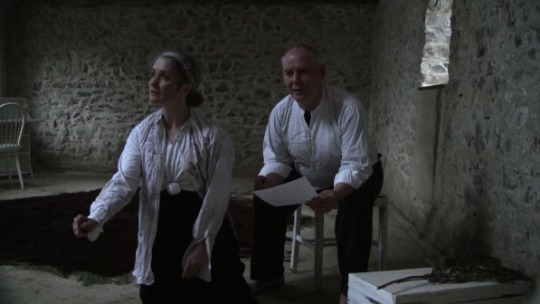
Katie O'Reilly, (2010), Jo Shapland and Phillip Zarrilli in rehearsals, Told by the Wind. The Llanarth Group, 2010. [ONLINE]. Available at: https://kaiteoreilly.wordpress.com/tag/jo-shapland/ [Accessed 28 March 2017].
0 notes
Video
youtube
My video review of Told By The Wind by Phillip Zarrilli
0 notes
Text
‘Spect-actor’
This Post aims to look at the role of the ‘spect-actor’, its origins and uses.
In the foreword to Games for Actors and Non-Actors (Boal, 2005, p. 23), Andrew Jackson comments that “Spect-actor’ is a Boal coinage to describe a member of the audience who takes part in the action in any way; the spect-actor is an active spectator, as opposed to the passivity normally associated with the role of audience member.” This concept will be a crucial component of creating Remote Control in an effective way.
Remote Control does not aim to be defined as forum theatre, nor does it wish to give total control and power to its audience. This is the specific aim for the piece, to eliminate most powers of choice, but allow participation to a degree that aims to cause discomfort in the lack of personal expression. Phillip Zarrilli notes that in order to stage Boal’s style of ‘Forum Theatre’, the characters must have clearly defined “ideology[ies]… social function[s], profession[s]”, and “each character must be presented ‘visually’ in such a way as to be recognisable independently” (2002, p. 269). Remote Control’s characters will have individually defining features, the long-standing presenter, Hugo, will have a cold off-screen manner, with his desperation becoming ever more apparent. The crew will be stern in their physical movements and blunt in speech. The floor manager and co-producer will exhibit these same traits, yet will be just as nervous and desperate as Hugo himself, solving problems in a chaotic fashion.
The crew and production team will be wearing plain black or grey clothes, functional not aesthetic, contrastingly, Hugo will be wearing formal and fitted clothes, to portray an attractive and ‘perfect’ image. However, the defining item of costume for the presenters will be their microphone and earpieces. Zarrilli states that “costumes must be easy for the spect-actors to get in and out of…” (2002, p. 269), much like the earpieces we will use.
Boal, A., 2005. Games for Actors and Non-Actors. revised, translated by Andrew Jackson ed. New York: Routledge.
Zarilli, P. B., 2002. Acting (re)considered: A Theoretical and Practical Guide. illustrated ed. London: Psychology Press.
Next Post
0 notes